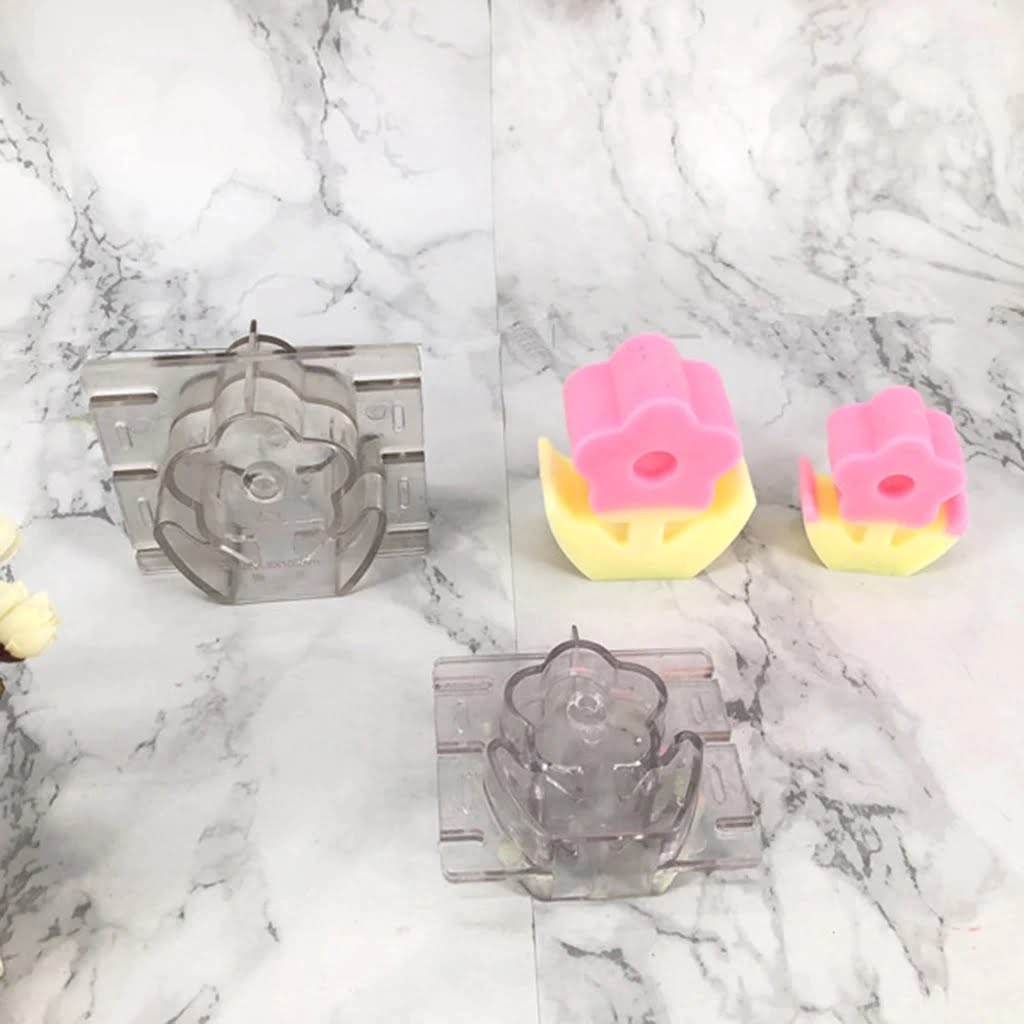Candle making in colonial America answered the vital need for a reliable and efficient source of light. Candles played a crucial role in illuminating homes, workshops, and streets during a time when electricity was non-existent. Understanding the history, techniques, and significance of candle making in colonial America provides insights into the daily lives of early American settlers.
The practice of candle making has roots in Europe, where it was brought over by colonists to America. As colonies grew and urbanized, the demand for candles surged, leading to the establishment of local candle making industries. The transition from tallow-based candles to beeswax or bayberry candles marked advancements in both materials and techniques used in colonial America.
Candles were not just simple lighting sources; they symbolized warmth, comfort, and productivity for colonial Americans. Women played a significant role in this craft, often handling the household’s candle making responsibilities. Candle making workshops offered training opportunities for apprentices looking to master this skill, contributing to the economic growth of colonial communities. This article delves into the intricate world of candle making in colonial America, shedding light on its historical and cultural importance.
The History of Candle Making in Europe and Its Transition to Colonial America
Candle making has been an essential skill for centuries, dating back to ancient times. In Europe, the art of candle making was refined and developed over the years, becoming an important industry.
The history of candle making in Europe played a crucial role in its eventual transition to Colonial America. As European settlers began to establish colonies in America, they brought with them the knowledge and techniques of candle making, laying the foundation for this essential craft in the New World.
In Europe, candle making was originally done using tallow or beeswax, which were readily available materials at the time. Tallow candles were common among lower-class households due to their affordability, while beeswax candles were favored by wealthier individuals for their cleaner burn and pleasant aroma. The technique of dipping wicks into melted wax or tallow to create candles was a common practice in Europe and was eventually adopted by early American colonists.
Materials Used in Candle Making
- Tallow
- Beeswax
- Bayberry wax
Techniques Used in Candle Making
- Dipping method
- Molding method
- Pouring method
The transition of candle making techniques from Europe to Colonial America was vital for the survival of early settlers. Candles were used not only for lighting homes but also for cooking, reading, and religious purposes.
As supplies from Europe dwindled due to economic hardships and conflicts, colonists had to rely on their own resources to produce candles. This led to the development of new methods and materials unique to colonial America, shaping the trajectory of candle making in the New World.
The Importance of Candles in the Daily Lives of Colonial Americans
Candles played a crucial role in the daily lives of colonial Americans, providing light after the sun had set and serving various other purposes. In a time when electricity was non-existent, candles were essential for lighting homes, churches, and streets. Colonial settlers heavily relied on candles during long winter nights when daylight was scarce. Candles were also used for tasks such as reading, sewing, cooking, and even social gatherings.
In colonial America, candles were not just a source of light but carried symbolic significance as well. They were often used in religious ceremonies and rituals, adding solemnity and reverence to the proceedings. For example, candles were commonly lit during church services and prayer meetings to create an atmosphere of spirituality and devotion. Additionally, candles were used to mark special occasions such as weddings, funerals, and holidays like Christmas.
The process of making candles in colonial America was labor-intensive and required specific skills and knowledge. Colonial candle makers used various materials such as beeswax, tallow (animal fat), and bayberry wax to create different types of candles with varying qualities. The techniques involved in candle making included dipping wicks into melted wax multiple times to build layers or pouring liquid wax into molds to create cylindrical shapes.
Despite the tedious nature of the craft, candle making workshops flourished in colonial America, with both men and women participating in this essential trade. Women especially played a significant role in candle making at home, utilizing leftover animal fats to produce simple tallow candles for household use.
| Colonial American Candle Making Materials | Types/Uses |
|---|---|
| Beeswax | Premium quality; expensive; used for church ceremonies |
| Tallow (Animal Fat) | Commonly used by households; cheaper option; shorter burning time |
| Bayberry Wax | Rare; sweet-smelling; used for special occasions only due to limited availability |
Materials and Techniques Used in Candle Making in Colonial America
In colonial America, candle making was an essential skill that provided light for households and businesses. The materials and techniques used in candle making during this time period reflected the resourcefulness and ingenuity of the early American settlers.
Some of the common materials used in candle making in colonial America included beeswax, tallow (animal fat), and bayberry wax. Beeswax candles were considered a luxury item due to the labor-intensive process of collecting beeswax from beehives.
On the other hand, tallow candles were more commonly used by the lower classes as they were more affordable to produce. Bayberry wax, derived from bayberries that grew along the coastlines, was also utilized for candle making, especially in New England where bayberry bushes were abundant.
The techniques used in candle making varied depending on the type of material being used. For beeswax candles, the process involved melting the beeswax, adding a wick made of cotton or hemp, and then pouring the molten wax into molds to cool and harden.
Tallow candles required rendering animal fat into a usable form, then dipping or molding the tallow around a wick to create a candle. Bayberry wax candles involved boiling bayberries to extract the wax, which was then molded into shape with a wick inserted through the center.
The Role of Women in Candle Making in Colonial America
Women played a crucial role in the production of candles in colonial America. In households and small communities, women were typically responsible for making candles, a task that required skill and efficiency. The art of candle making was passed down from generation to generation, with women honing their techniques over time. This practice not only provided families with a much-needed light source but also served as a form of self-reliance for women in the colonies.
One of the primary reasons women were heavily involved in candle making was its practicality. Candles were essential for lighting homes, especially during the long winter nights when daylight was scarce. Women had to ensure a steady supply of candles to illuminate their households for cooking, cleaning, and other tasks after sunset. Additionally, candles were used for religious purposes and social gatherings, further emphasizing their importance in colonial American society.
In terms of materials and techniques, women utilized various resources to make candles in colonial America. Tallow, derived from animal fat, was commonly used to create basic candles. Beeswax was another popular material but was more expensive and often reserved for special occasions or religious ceremonies. The process of dipping wicks into melted tallow or beeswax required patience and precision, skills that many women became adept at through years of practice.
| Role | Impact |
|---|---|
| Practicality | Provided essential light sources |
| Materials | Tallow & Beeswax |
| Techniques | Dipping wicks with precision |
Candle Making Workshops and Apprenticeships in Colonial America
Candle making workshops and apprenticeships played a vital role in Colonial America, where the production of candles was essential for providing light in homes, businesses, and public spaces. These workshops served as centers where individuals, particularly women and young apprentices, learned the art of candle making through hands-on experience and guidance from skilled artisans. Additionally, these workshops provided an opportunity for communities to come together to share knowledge and techniques related to this important craft.
The Structure of Candle Making Workshops
In Colonial America, candle making workshops were often organized in a hierarchical manner, with experienced candle makers overseeing the training of apprentices and less experienced individuals. These workshops were typically located in central areas within towns or villages, allowing easy access for community members who wanted to learn or improve their candle making skills.
The workshops were equipped with tools such as molds, wicking materials, and pots for melting wax, creating a space conducive to the production of candles on a larger scale.
Benefits of Apprenticeships in Candle Making
For young individuals seeking employment or a trade skill in Colonial America, apprenticeships in candle making offered valuable opportunities for learning and career advancement. Apprentices would work under the guidance of master candle makers, learning the intricacies of different candle types, techniques for scenting candles, and proper ways to handle wax.
Through hands-on experience and mentorship from skilled artisans, apprentices gained practical knowledge that allowed them to eventually establish their own candle making businesses or contribute to existing operations within their communities. The process of apprenticing also fostered a sense of camaraderie among participants within the workshop setting.
The Economic Impact of Candle Making in Colonial America
Candle making in colonial America played a significant role not only in illuminating homes and public spaces but also in shaping the economic landscape of the time. The production and trade of candles contributed to the local economies of various American colonies, providing opportunities for entrepreneurship, employment, and commerce. This section will delve into the economic impact of candle making in colonial America, shedding light on its influence on the livelihoods of individuals and communities.
Local Production and Trade
In colonial America, candle making was often a home-based industry, with many households producing their own candles for personal use as well as for sale or barter. As demand for candles grew, especially in urban areas where lighting was essential for businesses and social activities, specialized candle makers emerged to meet the market needs.
These candle makers operated small workshops or establishments where they produced candles in larger quantities using specialized tools and equipment. The trade of candles extended beyond local markets, with merchants exporting surplus production to other colonies or even back to Europe.
Employment Opportunities
The growth of the candle making industry in colonial America created employment opportunities for individuals from diverse backgrounds. While skilled craftsmen dominated the trade in larger cities, rural areas saw an increase in cottage industries where families worked together to produce candles using traditional methods.
Women played a crucial role in this aspect, contributing their expertise in dipping, molding, or rendering tallow to produce high-quality candles. Apprenticeships were common within candle making workshops, allowing young individuals to learn the trade and eventually establish their own candle-making businesses.
Contribution to Local Economies
Candle making not only provided income for individual artisans and traders but also contributed to the overall prosperity of colonial economies. The sale of candles generated revenue that supported other industries such as agriculture (for beeswax production) and animal husbandry (for tallow extraction).
Additionally, the availability of affordable lighting sources like candles enhanced productivity during evening hours, enabling businesses to extend their operations and boost profitability. The economic impact of candle making can be seen as a testament to its enduring importance in shaping colonial American society.
The Legacy of Candle Making in Colonial America
Candle making in colonial America left a lasting legacy that continues to influence modern-day practices and trends. The traditional methods and techniques used by colonists to create candles have paved the way for a resurgence in the art of candle making today. With a focus on sustainability, natural ingredients, and handcrafted products, many candle makers are looking back to colonial practices for inspiration.
One of the main modern-day influences of candle making in colonial America is the focus on using natural materials and traditional techniques. In the past, colonists would use animal fats or beeswax to make their candles, avoiding synthetic materials.
Today, many artisan candle makers are following suit by using soy wax, beeswax, or other natural ingredients to create their products. This return to simple and sustainable practices not only honors the history of candle making but also appeals to consumers seeking environmentally-friendly options.
Furthermore, the craftsmanship and attention to detail that defined colonial-era candle making can be seen in modern-day artisanal candles. From hand-dipped taper candles to intricately designed soy candles, contemporary candle makers are taking inspiration from the meticulous workmanship of their predecessors. The dedication to quality and artistry seen in colonial-era candle making has influenced a revival of interest in handmade candles that offer a unique touch to home décor and ambiance.
Conclusion
Candle making in Colonial America played a crucial role in the daily lives of early settlers, providing them with not just light but also economic opportunities and a sense of community. The process of crafting candles from tallow or beeswax required skill and dedication, with women often taking the lead in this important household task. As the colonies developed, candle making workshops and apprenticeships emerged, further solidifying the trade’s importance in shaping local economies.
The legacy of candle making in Colonial America can still be seen today in various ways. The techniques and materials used during that time have influenced modern candle making practices, with beeswax candles being particularly prized for their natural ingredients and clean-burning properties. Additionally, the spirit of craftsmanship and perseverance that characterized colonial candle makers continues to inspire artisans and entrepreneurs seeking to revive traditional crafts.
In conclusion, exploring the significance of candle making in Colonial America provides valuable insights into the resilience and resourcefulness of early American settlers. Beyond its practicality as a source of light, candle making symbolizes the ingenuity and industry that defined everyday life in colonial times. By understanding the history and impact of this craft, we gain a deeper appreciation for the traditions that have shaped our present-day society.
Frequently Asked Questions
How Were Candles Made in Colonial America?
In Colonial America, candles were primarily made using tallow or beeswax. Tallow candles were more common since they were cheaper to produce. The process involved melting the tallow, pouring it into molds with a wick in the center, and allowing it to cool and harden.
What Tools Did Colonial Candle Makers Use?
Colonial candle makers used basic tools such as molds, wicking needles, scissors, and pots for melting the tallow or beeswax. Molds were made of metal or wood and came in various shapes and sizes to create different types of candles. Wicking needles were used to thread the wick through the mold before pouring in the melted wax.
What Is the History of Candle Making?
The history of candle making dates back thousands of years to ancient Egypt and Rome when candles were made from tallow or beeswax. Over time, new materials like spermaceti and paraffin wax were introduced, leading to advancements in candle production techniques.
In colonial times, candles played a vital role in providing light before the invention of electricity. Today, candle making has become more of an art form with a wide variety of wax types, scents, and styles available for consumers.

Welcome to my candle making blog! In this blog, I will be sharing my tips and tricks for making candles. I will also be sharing some of my favorite recipes.





